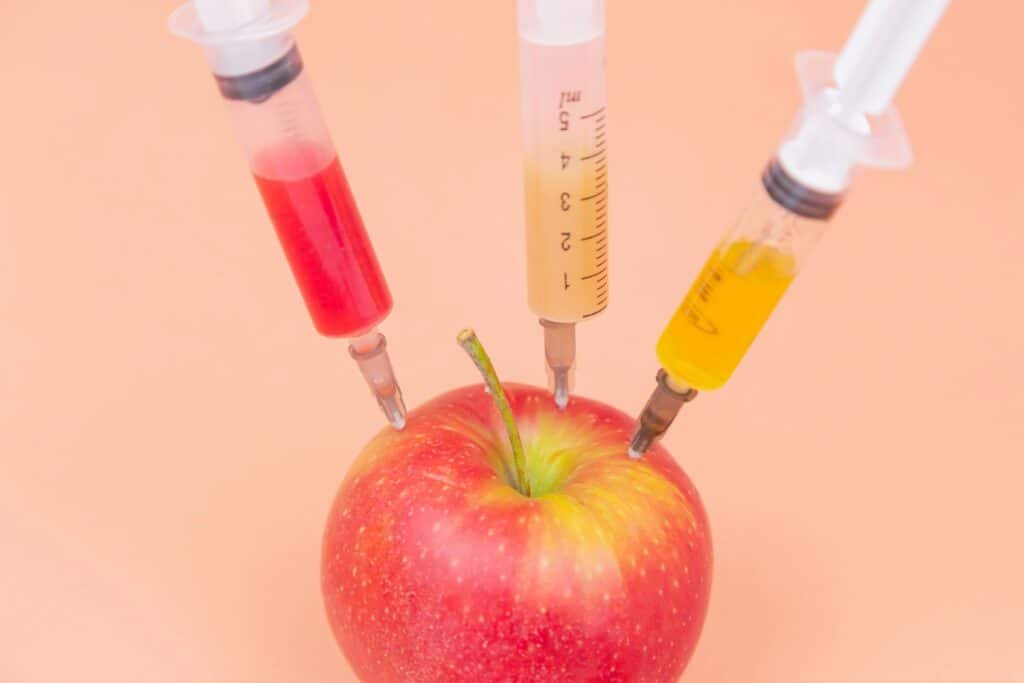CONTENTS
Introduction
Understanding Flavourings: Artificial vs. Natural
The Hidden Problem with Flavours
Health Effects of These Flavourings
Making Healthier Choices
Conclusion
Introduction
Flavours are an essential part of our eating experience, influencing everything from the satisfaction of a meal to the craving for a specific food. In the food industry, flavourings play a significant role in enhancing the taste of products and making them more appealing to consumers. However, when it comes to food, the source of these flavours—whether artificial or natural—can have different implications for our health.
In this blog post, we’ll delve deep into the world of artificial and natural flavourings, their use in food products, and their potential health effects. We’ll explore how each type of flavouring is made, the hidden issue with flavourings, and the potential long-term consequences of consuming them. We will also provide insights on how to make healthier food choices to reduce the impact of these flavourings on your overall well-being.
Understanding Flavourings: Artificial vs. Natural
Before we dive into the health effects, it’s important to understand the difference between artificial and natural flavourings.
Artificial flavourings are synthetically produced chemicals that are used to mimic the taste of natural ingredients, such as fruits, herbs, or spices. These flavourings are synthesized in a lab, by analyzing the molecular structure of a natural flavour and recreating it using chemical compounds, often derived from petroleum or other non-food sources.
These artificial flavours are typically simpler in composition than natural ones and can be designed for consistency, cost-effectiveness, and longer shelf life. Because they are made under controlled conditions, artificial flavours can be precisely tailored for taste and stability.
Natural flavourings, on the other hand, are derived from real foods, such as fruits, vegetables, herbs, or spices. They are extracted from plant or animal sources through physical, enzymatic, or microbiological processes. The raw materials, such as fruits, herbs, spices, or meats, undergo techniques like distillation, fermentation, roasting, or cold pressing to isolate the desired flavour compounds.
These extracted compounds are then blended with solvents, emulsifiers, or preservatives to stabilize the flavour for use in food products. Because they are derived directly from nature, their composition can be more complex and varied.
The Hidden Problem with Flavours
Both artificial and natural flavourings can be made of over 100 chemicals, with emulsifiers, solvents, preservatives and flavour enhancers comprising up to 80-90% of the flavour compound.
From a manufacturing perspective, artificial flavours are often preferred due to their lower cost and simpler composition, whereas natural flavours, which can contain hundreds of compounds, are more expensive but cater to consumer demand for “natural” products.
The FDA (Food and Drug Administration) does not have a strict definition of “natural” in the context of flavourings, and products labeled as “natural” may still contain additives, preservatives, or synthetic chemicals that consumers may not be aware of.
Health Effects of These Flavourings
While artificial flavourings are considered generally safe by food regulatory authorities like the FDA when used within specified limits, there are ongoing concerns about their long-term health effects.
1. Potential Allergic Reactions
Some individuals may be sensitive or allergic to certain artificial flavourings. For example, some artificial flavours are derived from petrochemicals, which can lead to skin irritation, respiratory issues, or digestive distress in sensitive individuals. Additionally, artificial flavouring agents may contain sulfites or benzoates– common preservatives known to trigger asthma symptoms, hives, or other allergic responses in some people.
Some artificial flavours also contain excitotoxins like monosodium glutamate (MSG), which can cause headaches, dizziness, or neurological symptoms in sensitive individuals.
2. Hyperactivity and Behavioural Issues
There has been growing concern, especially in children, about the link between artificial additives (including flavourings and colours) and hyperactivity. Studies have suggested that certain artificial colourings and flavourings may exacerbate symptoms of Attention Deficit Hyperactivity Disorder (ADHD) or lead to behavioural issues in children. For instance, a 2007 study in the UK found that a combination of artificial colourings and sodium benzoate (a preservative) was linked to increased hyperactivity in children.
3. Obesity and Metabolic Issues
Consuming too many highly processed foods containing artificial flavourings may contribute to an unhealthy diet, which can lead to obesity and metabolic disorders. These foods often contain high levels of sugar, unhealthy fats, and artificial sweeteners, all of which can contribute to insulin resistance, weight gain, and chronic conditions like diabetes and heart disease.

For natural flavourings, despite coming from real food sources, they still have their own set of health implications. In some cases, they may be better for you than artificial flavourings, but they are not always free from issues.
1. Allergic or Sensitivity Reactions
While the chances are lower, some natural flavourings can still trigger allergies since food manufacturers are not required to disclose any specific ingredients used in their flavourings. Some commonly used ingredients in natural food flavourings that can cause allergic reactions include cilantro, mustard, celery and certain herbs and spices.
Reactions can also occur from the additives in these natural flavourings. Propylene glycol and benzyl alcohol for example, have been linked to allergic reactions, gastrointestinal issues, and potential toxicity with long-term exposure. Additionally, certain preservatives used in natural flavours, like sodium benzoate, may react with other ingredients to form benzene, a known carcinogen.
Since manufacturers are not required to list these incidental additives, consumers may be unknowingly exposed to chemicals that could contribute to inflammation, allergic or sensitivity reactions.
2. Overconsumption of Processed Foods
Natural flavours enhance the taste and aroma of processed foods, making them more appealing without adding real, whole-food ingredients. This can lead to increased consumption of processed foods over nutrient-dense options like fresh fruits, vegetables, and lean proteins.
Since processed foods are often high in refined sugars, unhealthy fats, and low in fibre, excessive intake can contribute to poor nutrition, weight gain, and metabolic disorders like insulin resistance and type 2 diabetes. Additionally, the artificial enhancement of flavours may dull taste sensitivity over time, making whole foods seem less satisfying and reinforcing cravings for processed options.
Making Healthier Choices
The debate between artificial and natural flavourings boils down to the larger question of processed foods versus whole foods. Here are some tips for making healthier choices:
- Prioritize Whole, Unprocessed Foods: The best way to avoid both artificial and unnatural flavourings is to focus on fresh, whole foods that require little to no processing. Fruits, vegetables, whole grains, and lean proteins offer natural flavours that don’t require additives or flavour enhancers.
- Read Labels: When choosing packaged or processed foods, always check the ingredient list. Look for products with minimal additives, and try to choose those that contain flavourings derived from real ingredients rather than artificial or natural flavourings.
- Limit Processed Snacks and Sweets: Many processed snacks, candies, and baked goods contain high levels of artificial or natural flavourings. Reducing your consumption of these foods can help minimize your exposure to additives that may impact your health.
- Opt for Homemade Flavours: When possible, use fresh herbs, spices, and extracts to flavour your meals at home. These provide more control over the quality and quantity of the flavours in your food.
Conclusion
Flavourings, whether artificial or natural, play a significant role in the taste and appeal of the foods we eat. However, their impact on our health shouldn’t be overlooked. Artificial flavourings have been linked to potential allergic reactions, behavioural issues, and long-term health risks like metabolic diseases. Natural flavourings, while derived from real food sources, can still undergo heavy processing and contain undisclosed chemicals that can incite reactions.
Ultimately, the key to maintaining good health is to prioritize whole, minimally processed foods and be mindful of the flavourings used in packaged and processed items. By making informed food choices, you can enjoy flavourful meals while minimizing your exposure to harmful additives and chemicals.




2 Comments